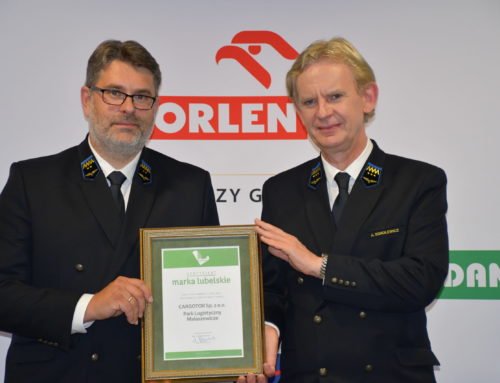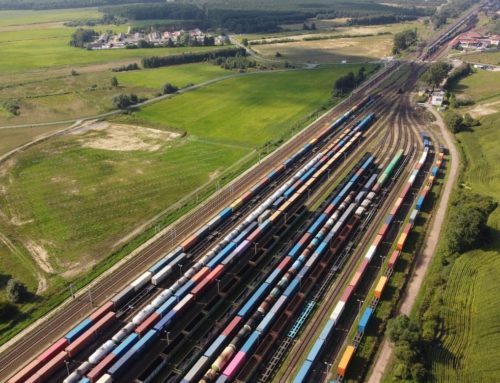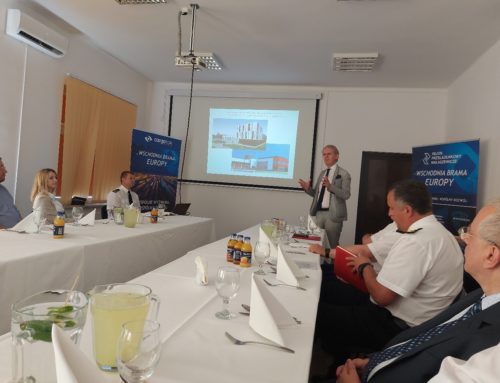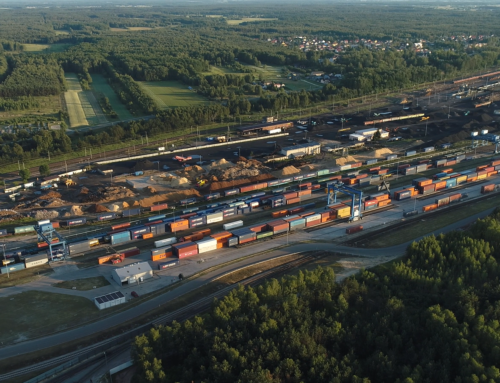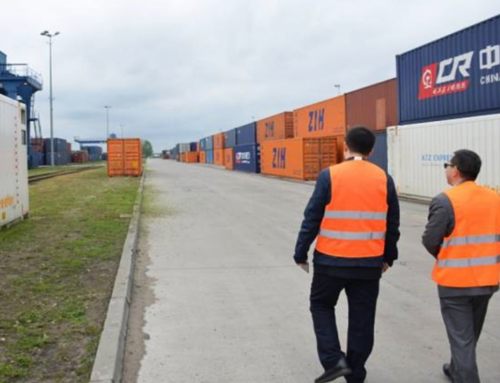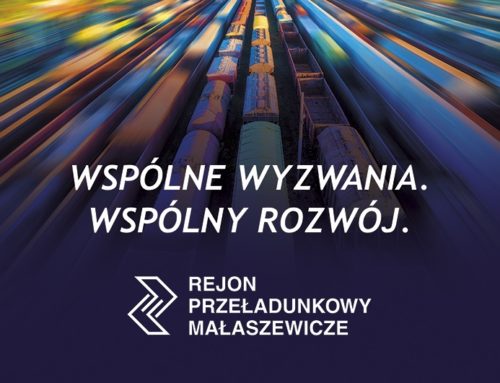I sometimes feel like I am not a CEO of the railway infrastructure operator, but a gold mine manager. This is what Małaszewicze means for the State Budget. But this is the reason behind special focus on us, at the same time. There are many countries and centres interested in revenues from customs duties and taxes we generate and our competitors keep trying to depreciate the unquestionable and obvious role of Małaszewicze within the NSR – says Andrzej Sokolewicz, Cargotor CEO.
Małaszewicze is an exceptional place, he emphasises. For EU states, it is an eastern gate at the shortest route to Eastern Europe and farther on, to Asia, while in the opposite direction – it is a gate to the West.
This is also directly related to the Chinese idea of the New Silk Road (NSR), including the development of intermodal railway transport.
– This is why Małaszewicze and the Logistic Park here represent a national asset – states Sokolewicz. – But this is also why it has become an area og global confrontation of logistic powers, where no soft game happens.
Infrastructure
When coming from east, trains enter the country via the Brześć-Terespol border crossing. This is where border checks and customs clearance take place. Thereafter, trains proceed to Małaszewicze, taking the broad-gauge track owned by PKP PLK.
Małaszewicze is 5 km west of the border crossing. From the marshalling hump in Kobylany onwards, the railway infrastructure is administered by Cargotor, the PKP Group company. This is the area of Małaszewicze Logistic Park at the same time, formerly referred to as Małaszewicze Cargo Terminal.
– The new name better conveys the intentions behind the development of this place – says Andrzej Sokolewicz. – It accommodates four container terminals and numerous bulk goods handling terminals.
This is where train marshalling takes place. Cars are grouped according to their destination and dispatched westwards – on “normal” gauge rails (1435 mm) this time.Between 20 and 30% of freight, depending on the season of the year, is loaded on trucks in these terminals.
High Dynamics of Dispatch
In September this year, an average of 14.1 trains were dispatched each day in Małaszewicze Logistic Park, i.e. by 21.6% more than in September 2019 (11.6 trains). An average daily car turnover has also increased – from 923 last year to 1099 last month.
– It is particularly important that the share of trains in the total number of trains dispatched in intermodal transport increased to 62.5% in September this year, i.e. by 42% – stresses CEO Andrzej Sokolewicz. At the same time, as much as half (54 %) of cars handled in September were related to intermodal transport.
Containerised cargo is handled by terminals owned by private companies: Adampol, Agrostop, Europort and PKP Cargo Terminale.
– Their total cargo handling capacity is sufficient to meet train deconsolidation or consolidation service deadlines – adds Sokolewicz. – Saying that Małaszewicze is the New Silk Road bottleneck is repeating false information, which some people are looking for.
Sufficient Capacity
According to the Railway Transport Office (UTK), Małaszewicze Logistic Centre (PKP Cargo Terminale) has four broad-gauge and four “normal gauge” tracks, an annual cargo handling capacity of 223 380 TEU and a storage capacity of 1872 TEU. It is capable of serving up to 8 trains per day.
Europort Terminal in Małaszewicze can dispatch up to 80 K TEU and store up to 3000 TEU per year; the annual dispatch capacity of Adampol Container Terminal is up to 60 K TEU – six trains per day, while Agrostop Cargo Handling Terminal can dispatch 60 K TEU and – with its two container handling stations – its daily capacity is three trains. This sums up to an annual capacity in excess of 420 K TEU.
When asked if the existing cargo handling capacity if the four modal terminals will be sufficient with the continuing high growth dynamics of cargo incoming from the Far East, Andrzej Sokolewicz replies: – Definitely. Owners of terminals keep preparing for new cargo volumes by implementing intense modernisation and development measures, which includes adding new cargo handling equipment.
For example, PKP Cargo Terminale will complete the installation of an rubber tyred gantry crane (RTG) this month. The machine is designed to handle containers using a telescope spreader for up to 41 tons. It will be operable in ambient temperatures ranging from -30°C to +45°C.
The railway infrastructure operator, Cargotor, is also getting ready for expansion and modernisation, in collaboration with PKP PLK. To improve the train traffic flow, studies on feasibility variants with a recommendation and a building permit design are just being completed.
Cargotor CEO emphasises that effectiveness of Małaszewicze Logistic Park, including in particular effectiveness of container terminals, not only depends on their cargo handling capacity, but also on the entire logistic chain, including the timely delivery of receiving cars, so as to be able to re-load containers.
The Strategic Game
Andrzej Sokolewicz refers to the fact that 80% of proceeds from customs duties and taxes generated in Małaszewicze operations go to the EU budget, but 20% – to the budget of Poland.
– We are talking about billions zlotys and these amounts are growing together with the increasing volume of cargo handled – says Sokolewicz. This is why I sometimes feel like I am not a CEO of the railway infrastructure operator, but a gold mine manager. This is what Małaszewicze means for the State Budget. But this is the reason behind special focus on us, at the same time. There are many countries and centres interested in revenues from customs duties and taxes we generate and our competitors keep trying to depreciate the unquestionable and obvious role of Małaszewicze within the NSR.
Source: https://intermodalnews.pl/2020/10/11/a-sokolewicz-przy-obsludze-njs-nie-ma-miekkiej-gry/

